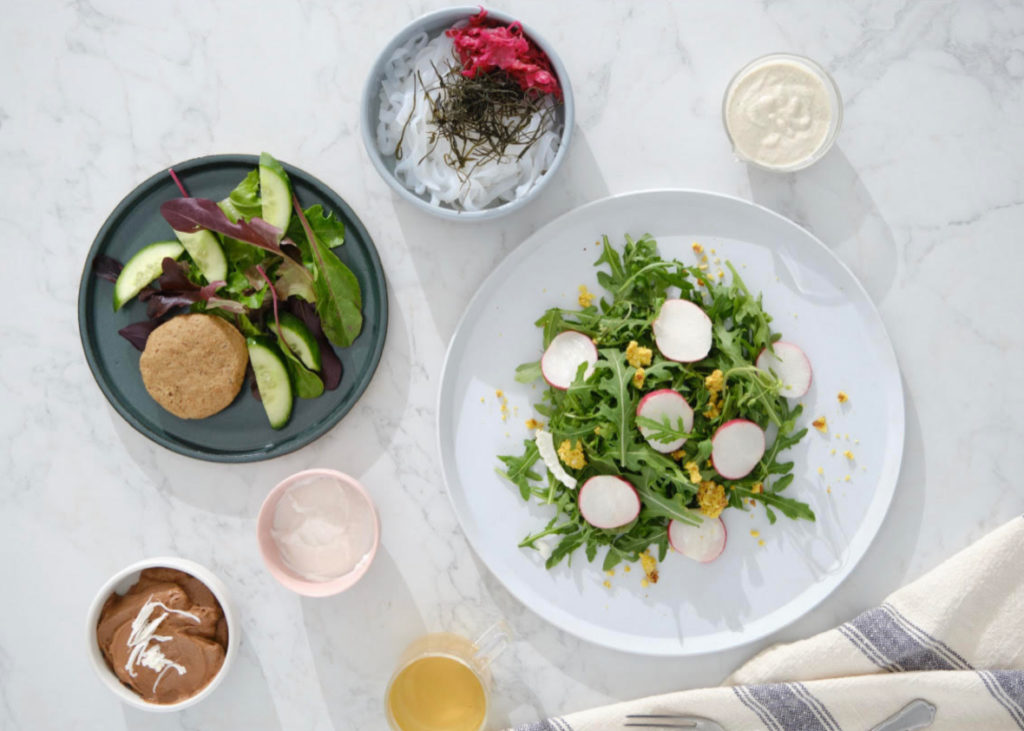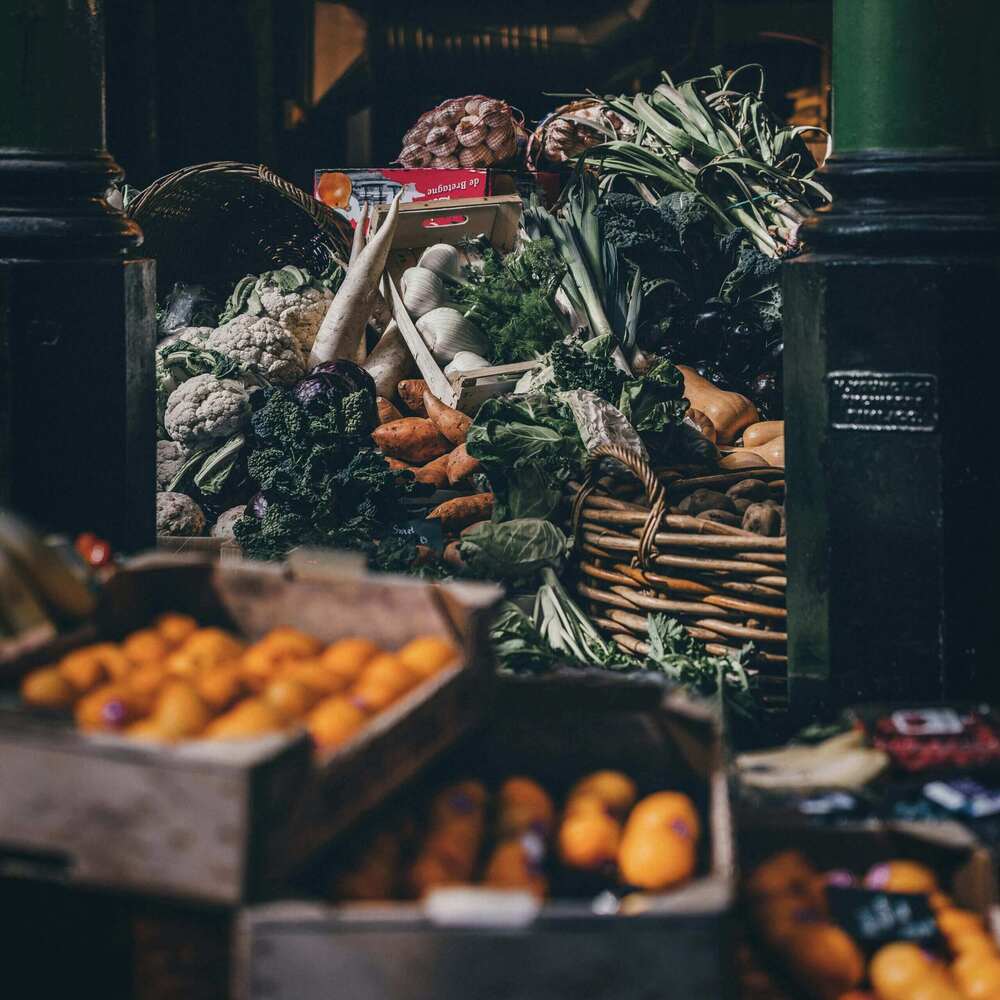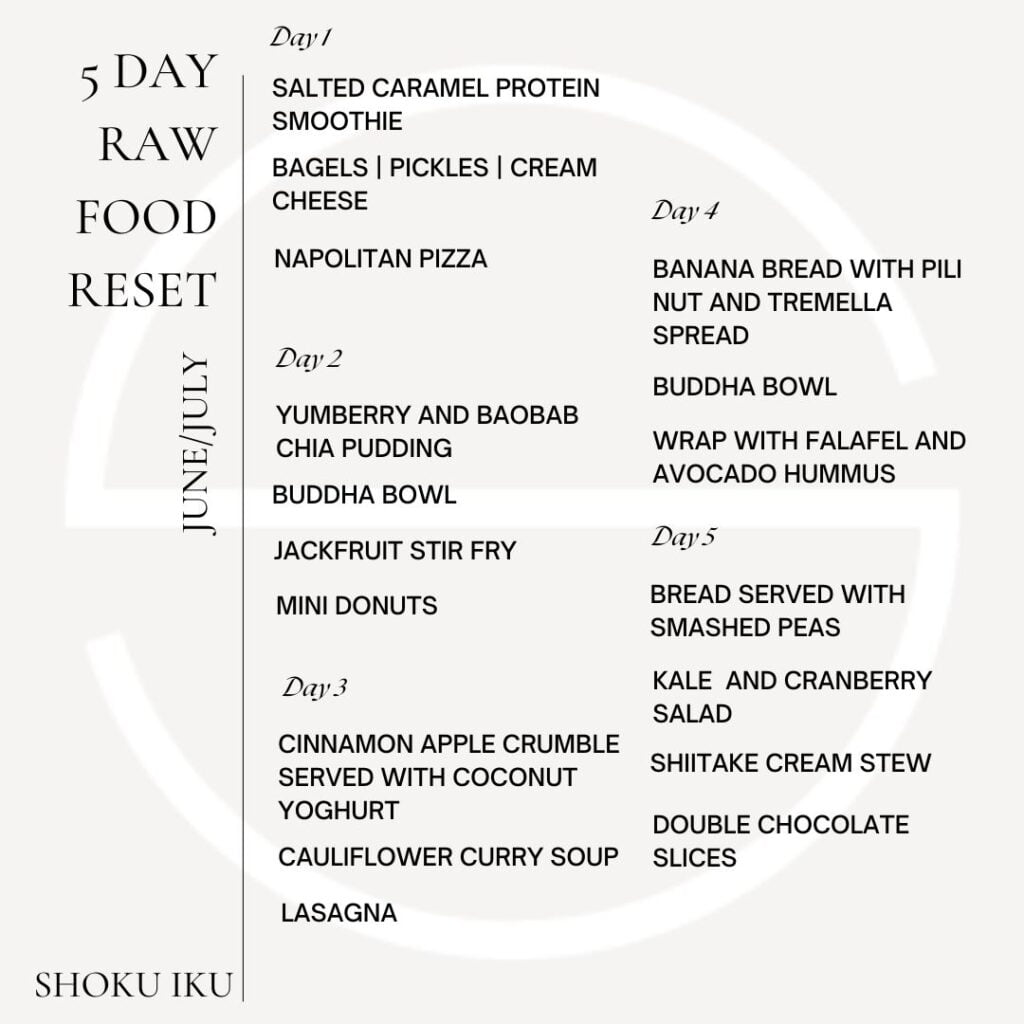
Gut Health and Immunity: How a Healthy Gut Strengthens Your Immune System Naturally
We often think of the immune system as something that

Kick-start, energise, rejuvenate
All carefully planned and prepared to help nourish, reset and rejuvenate the body and mind.

In recent years, the raw food diet has grown in popularity for a variety of reasons. Despite this surge, a lot of people remain unaware of what the raw food diet actually is, as well as the pros and cons surrounding this way of eating. In this article, let’s do a deep dive into the raw food diet. From the benefits of going on a raw diet, to a meal plan you can follow, by the end of this post we’re confident we’ll be able to answer all your questions and clear up any myths.
To begin, what is a raw food diet anyway? Otherwise known as raw foodism or raw veganism, the raw food diet is one that consists of consuming strictly raw and unprocessed foods.
To give you a better idea of this, food is considered raw if it has never been…
Given that traditional frying, grilling, and steaming cooking methods aren’t a part of the raw food diet, there are several alternative options for preparing your meals. These include juicing, blending, fermenting, dehydrating, soaking, and sprouting.
→ Given the rules of a raw food diet, the foods that are normally consumed are plant-based. However, some also eat raw egg and dairy products. Even less common is the consumption of raw meat and fish.

Some supporters believe raw foods have a higher concentration of nutrients compared to their cooked counterparts. According to an article published in Food Science and Biotechnology, certain cooking methods cause a reduction in the available vitamins of an ingredient. As such, for the raw food supporter, cooking foods harms the human body because it destroys the natural enzymes in the ingredients, thereby reducing their nutrient content and the life force contained in raw, unprocessed foods.
The natural enzymes in raw foods are said to aid in digestion and overall health. The raw food diet discourages cooking because of the idea that these natural enzymes are destroyed through cooking. Furthermore, given the high fiber content in raw food, digestion improves.
Detoxification is the process by which raw foods help the body eliminate toxins. On the raw food diet, this process is occurring all the time. This can also boost the immune system.
By going on a raw food diet, it’s much easier to lose weight. This is because managing calorie intake isn’t as hard, not to mention the fact that you’re generally eating much healthier foods. Based on a study published on MDPI, they found participants on a raw food diet to have lower BMI and body fat percentages in comparison to vegans and omnivores.
The last benefit of going on a raw food diet is the fact that it can improve your sense of life satisfaction. According to Frontiers in Psychology, this is true for raw fruits and vegetables. A study reported intake of raw fruits and vegetables reduced depressive symptoms and increased higher positive mood, in comparison to processed fruits and vegetables.
Read more: Vibrational Frequencies Of Foods And Emotions
Though we spoke about what a raw food diet is in the first place, let’s now take a look at the kinds of foods you can and can’t eat.
| Included | Not Included |
| Fresh fruits, dried fruits also allowed | Cooked fruits |
| Raw vegetables | Cooked vegetables |
| Some raw nuts and seeds | Roasted nuts and seeds |
| Some beans and legumes, like chickpeas, mung beans, or lentils | Beans like kidney beans, soybeans, fava beans |
| Some grains, so long as they are sprouted or soaked | Cooked grains |
| Some fats and oils like avocados, cold-pressed olive oil, raw coconut oil | Refined oils, sugar, and flour |
| Some fermented foods like kimchi and sauerkraut | Pasta, pastries, chips |
| Raw eggs or dairy, if wanted | Pasteurised juices and dairy. Alcohol |
| Raw meats or fish, if wanted | Coffee and tea |
Now you have an idea of what you can eat on a raw food diet, let’s learn how to go about starting one.
The transition into a raw food diet is easiest to make for those on a vegetarian or vegan diet, as those are already plant-based. However, for those who aren’t, it’s helpful to remember that cooking techniques like soaking, sprouting, fermenting, dehydrating, juicing, and blending are great for adding some flair to your meals.
Smoothies, salads, and bowls will become staples in this diet, as the opportunities for mixing raw ingredients are almost endless. By playing around and getting creative within the parameters of the diet, you’ll be able to smoothly transition into this new way of eating.
Read more: Raw Vegan Recipes.
While raw food advocates will stand by the benefits of raw eating, the fact remains that a number of their ideas aren’t backed by science.
Though we mentioned how raw food retains its ingredients’ natural enzymes, making that food healthier for consumption, this is not the full story.
While it’s true that cooking and heat destroy the natural enzymes contained in food, it’s also true that even if eaten raw, the acidic environment of the stomach ends up denaturing those enzymes anyways. Furthermore, according to the National Library of Medicine, the human body already produces its own enzymes for processes like digestion and energy production.
Another core belief behind the raw food diet is the notion that raw foods contain more nutrients than those that are cooked. Again, while it’s true that some nutrients like vitamin B and C decrease when cooked, according to the National Library of Medicine, other harmful antinutrients like lycopene, phytic acid, and total oxalate remain.
Besides this, cooking foods also destroys harmful anti-nutrients and bacteria.
| Raw Food | Vegan Diet |
| Foods cannot be cooked (reach temperatures over 104–118°F / 40–48°C) | Foods can be cooked |
| Raw meat and fish can be consumed if desired | Meat and fish cannot be consumed |
| The motivation for raw food proponents is the health benefits | The motivation for vegans tends to be related to ethical concerns regarding animal and environmental welfare |

If after reading this article the raw food diet sounds like something you’d be interested in, why not start off with Shoku Iku’s Raw Food Reset Meal Plan? Carefully designed as a means of providing your body with a reset over a 5-day period, Shoku Iku’s raw food meal plan is one of the best ways to get a tailored menu for this diet. From salted caramel protein smoothies to a kale and cranberry salad, this menu is sure to satisfy all your raw food cravings. For more information, contact us now!
Reference:

We often think of the immune system as something that

A clean, effective way to care for your teeth, without

In the world of tonic herbs and medicinal mushrooms, there’s
Copyright Shoku Iku © 2024 | All Rights Reserved.
The statements on this website have not been evaluated by the TGA or FDA. These products are not intended to diagnose, treat, cure or prevent any disease.
Sign up to receive your discount.